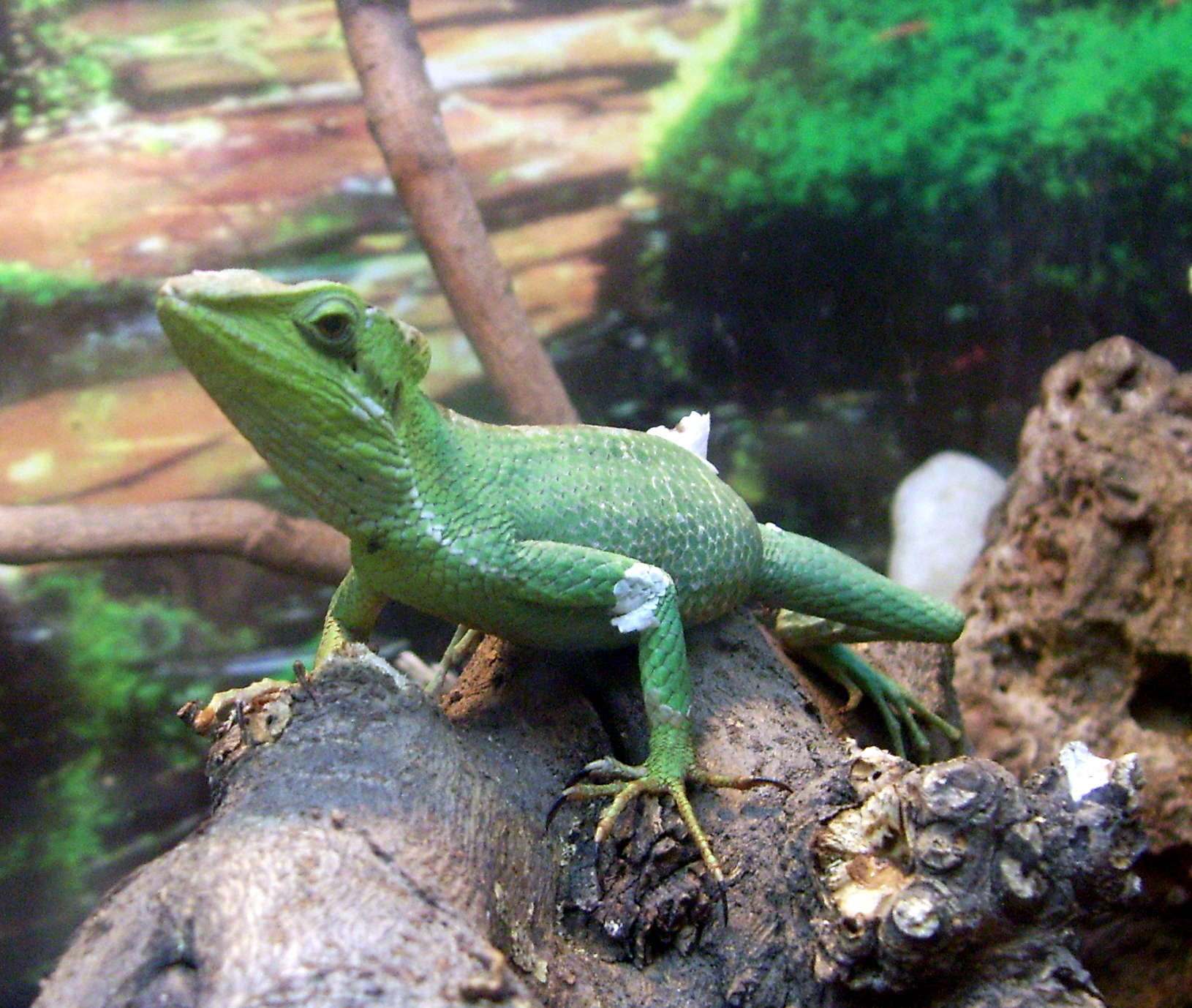- Laemanctus
Taxobox
name = Laemanctus

image_size = 240px
image_caption = Conehead Lizard, "Laemanctus longipes"
regnum =Animal ia
phylum = Chordata
classis = Sauropsida
ordo =Squamata
familia =Corytophanidae
genus = "Laemanctus"
genus_authority = Wiegmann,1834
subdivision_ranks = Species
subdivision ="Laemanctus longipes "
"Laemanctus serratus ""Laemanctus" is a
genus of corytophanidlizard s commonly referred to as conehead lizards or casquehead iguanas.The genus consists of two recognized
species with sixsubspecies :*Eastern Casquehead Iguana, "
Laemanctus longipes ":*"Laemanctus longipes longipes " (Wiegmann,1834 ):*"Laemanctus longipes deborrei " (Boulenger,1877 ):*"Laemanctus longipes waltersi " (Schmidt,1933 )
*Serrated Casquehead Iguana, "Laemanctus serratus ":*"Laemanctus serratus alticoronatus " (Cope,1866 ):*"Laemanctus serratus mccoyi " (Perez-Higareda & Vogt,1985 ):*"Laemanctus serratus serratus " (Cope,1864 )REPTILIA 48 REPTILIA 49Within the family Iguanidae, the subfamilyBasiliscinae includes the basilisks, genusBasiliscus; the helmeted iguanas, genusCorytophanes; and the casquehead iguanas,genus Laemanctus. The two species of casqueheadiguanas, L. longipes and L. serratus, differ fromeach other greatly. L. longipes is smaller, has no dorsalcrest, and lacks the spiny crown on the helmet that ischaracteristic of L. serratus.DescriptionThe serrated casquehead iguana, Laemanctus serratusCope, 1864, inhabits tropical rain forests from southernMexico to Honduras in Central America. It spends mostof its time clinging to thin branches, climbing down tothe ground only in pursuit of prey or to bury eggs.This lizard reaches a total length of 50–75 centimeters,but three-quarters of the length is tail. The body is laterallyflattened and the head is triangular. The name“serratus” refers to the distinctive spiny, or serrated,crest that crowns the head, and a low serrated dorsalcrest down the back. The legs and toes are extremelylong and thin and well adapted to the arboreal lifestyleof the species. The very long tail is not easily broken offor dropped by autotomy. We usually catch the lizards bytheir tails, and none have ever broken.The color of the lizard changes from brown to brightgreen to shades of blue depending on temperature.Dark brown longitudinal stripes are present along thecenter of the back and on the flanks. Also, dark crossbandsappear on the flanks of gravid females.This species does not have evident sexual dimorphism,but distinguishing males from females is not difficult.The male has visible hemipenal bulges at the base of thetail, and also has a wider head with a larger serratedcrown than the female.This species is kept in captivity at the Centre ofNatural Scientists in Prague, Czech Republic. In 1999,we managed to acquire a pair, both approximately 2years old. A year later we acquired four juveniles, whichwere later determined to be three males and one female.All of them were bred in captivity in the CzechRepublic.TerrariumThe older pair was initially housed in a terrarium of80 x 80 x 80 centimeters, furnished with thin branches andlive plants (Hoya, Schefflera). For substrate we usedpeat mixed in equal parts with river sand — at least 5centimeters deep. We provided a large basin for water,but later removed it so the female would not lay eggs inLaemanctus serratus adult with juvenile.Added By: James MacBrideText and photos byJan Hribal andVeronika HolanovaThe CasqueheadIguana
Wikimedia Foundation. 2010.
